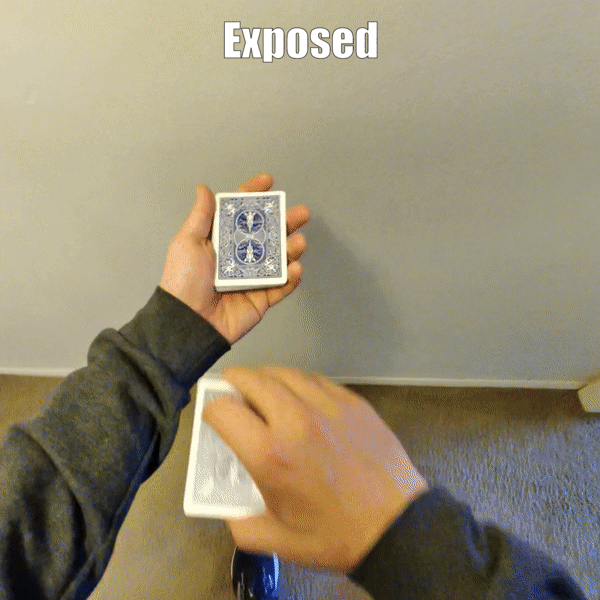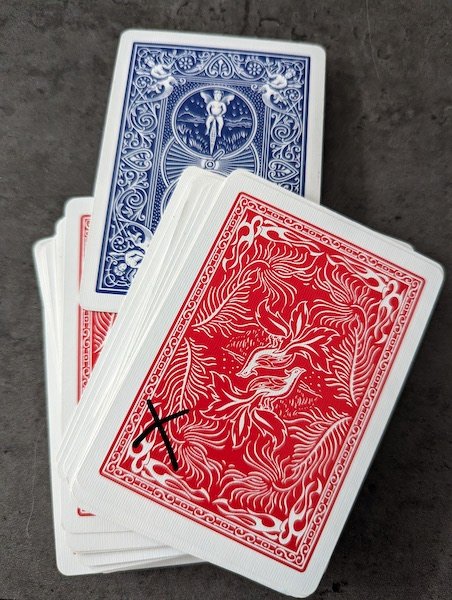The spectator opens the book to any page, reads any fable (about a paragraph long), and with no fishing you’re able to tell them details about the fable they read.
Good Things About Aesop’s Favorite Book Test
- The book is fully examinable.
- Your friend can really open the book to any page.
- The book looks legitimate. That is to say, it looks like an inexpensive copy of Aesop’s Fables.
- There are certain books that you might imagine people having some innate connection with. Things like the Bible, Grimm’s Fairy Tales, or the Tao Te Ching. Aesop’s Fables fits in with those. If you’re doing a book test that requires a specific book, it sort of makes sense that you’d use a book that people might connect with on a level deeper than they would with some random thriller.
- The person for whom you’re performing isn’t directed to a single word. They read a fable, and you’re able to pick up on a major thematic element of it (or more than just one of the major elements, depending on how much work you want to put into this).
- After you tell them about the fable, you can have them turn to any illustration in the book (there aren’t a lot, but there are enough to present the sense of a choice, and they’re all different) and you can tell them what the illustration is. The method for this that Dan Harlan teaches in the download is much better than the method taught in the written instructions.
- There are a couple of other small ideas built into the book. There’s an idea of Theo Annemann’s that essentially forces a word onto the spectator. There’s a procedural element to it, using playing cards, but I think it would feel relatively fair despite that. The deck is cut, three cards are dealt out, and those cards are used to pick a fable and a word, and that’s all forced. And that word is predetermined. Then nice part is, they can truly cut the deck anywhere, if they want they can dismiss the cards they cut to and use a different set of three cards further in the deck, and they can even choose which order to lay the cards out in (if you have two outs rather than just one). I thought it was a pretty interesting method that I was unfamiliar with.
The Ambiguous Thing About Aesop’s Favorite Book Test
To use this book test to its fullest potential will require memory work or a crib.
It took me about an hour to get the memory work really solidified. And I’m probably pretty average at this type of thing. I find the memory stuff satisfying to learn, so I don’t mind it. But if you don’t like learning that sort of thing—and the upkeep it will require to remember it long-term—then you’ll probably want to go with a crib.
The Worst Thing About Aesop’s Favorite Book Test
More clearly than it is with probably any other type of effect, book tests are an issue of trade-offs. What do you value when performing a book test? Do you want them to be able to think of (apparently) any word on the page? Do you want there to be no procedure? Do you want something impromptu?
There is no book test where the spectator opens a normal book which you’re unfamiliar with, just thinks of any word in the book, and then you name it. That doesn’t exist. So the question becomes which trade-offs are most acceptable to you. For me, the trade-offs required by the Hoy book test are worth it for the ability to do the trick impromptu with any books given to me. So as of now, that’s still my go-to.
The worst thing about Aesop’s Favorite Book Test is the same as the worst thing about any book test—its trade-offs. And those trade-offs are: you need to use this particular book, and you need to know the page number they’re on.
How do you find out what page number they’re on? There are three general methods, none of which are ideal.
Openly get the information. For example, just ask them to name any page. Or have them roll dice. Or have a third party name the page. The problem with that, when using your own book, is that it then becomes a trick that screams memorization. This is especially true for a slim book, where you’re picking up on the “general vibe” from each page. In fact, this is almost the method you’re actually using. Yes, it may be hard to believe you could memorize the book, but if the alternative is that you read their mind, then they’ll just assume you memorized the gist of what was on each page.
Peek the page number. This is a pretty standard technique in book tests. You riffle the corner of the book and stop wherever they tell you to. While they note what page you’re on, you get a peek at the opposite corner, and now you know what page they’re looking at. If you’re okay with this method, then this particular book makes that peek very easy due to the size of the book and the placement of the page numbers. I, however, don’t like having the page selected while the book is in my hands. One of the most frequently guessed methods when testing book tests that used a peek like this is that the performer somehow saw what page they were on. So I don’t use book tests where the book is in my hands. However, I think by combining the first phase of the book test with the second phase (where they flip to any illustration) you could lessen the thought that you somehow just peeked at the page they were on. And maybe combining the Annemann idea, where you predict in advance the word they’ll end up with—that would fully confuse them on what to think methodologically.
Secretly get the information. If, for example, they wrote down a two-digit number, you peeked it, and then they went to that page, you would know what page they were on without apparently hearing it directly, and without having to hold the book. The issue here is that it requires an additional level of procedure and usually other props. “Write down a number. Now let’s put that in an envelope. Now go to that page in the book over there…,” that’s a little screwy. If I was going to go this route, I’d use a marked deck with the picture cards removed. I’d have them shuffle the deck then deal out cards in a pile and deal any two cards they want, from any part of the deck, onto the copy of Aesop’s fables. I’d walk across the room and tell them to look at their two cards and arrange them in either order in their head, and then go to that page in the book. I would know what cards they had, so there’s a good chance I can discern which way they organized the cards in their mind by where they turn to in the book. For example, it’s not difficult to tell if they turned to 16 as opposed to 61. With closer numbers, I may have to do some fishing. I would justify the procedure by saying this produces “truly random” numbers, so I’ll definitely have no clue where they’d end up.
So that’s the “worst” part of Aesop’s Favorite Book Test.
One of the other good parts that I didn’t mention is that it’s only $40. It’s available from Dan Harlan Mystic Tower and MindFx and maybe some other places as well. For book test lovers, I think it’s definitely worth the investment. And for anyone else, if you weigh the pros and cons above and think it’s something you’d like, then the price is definitely fair.












